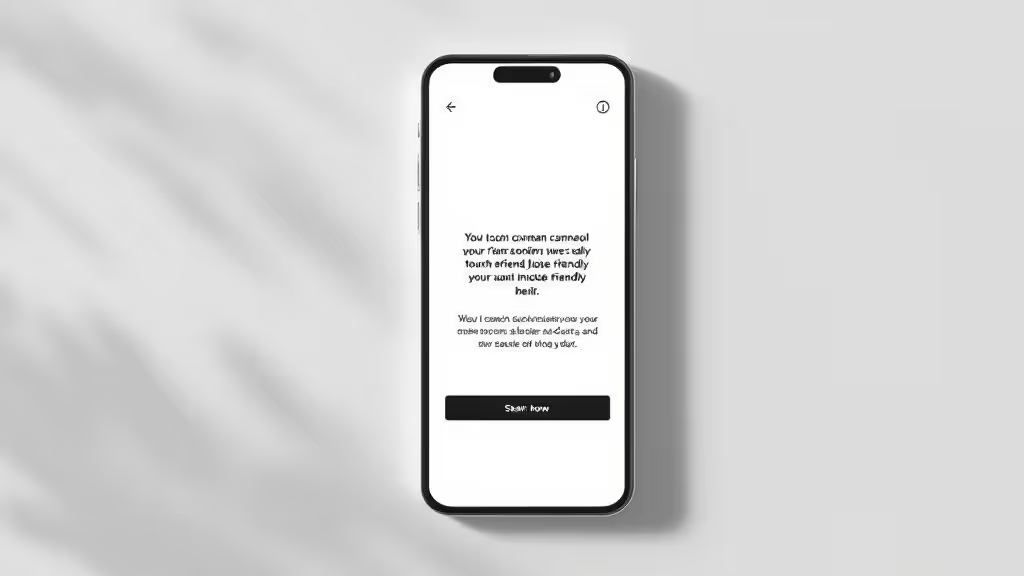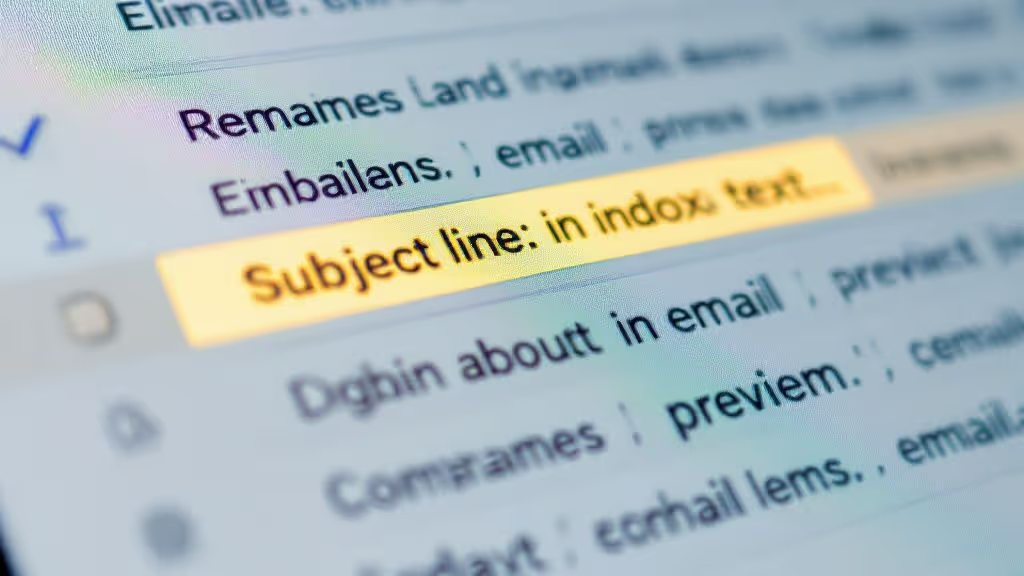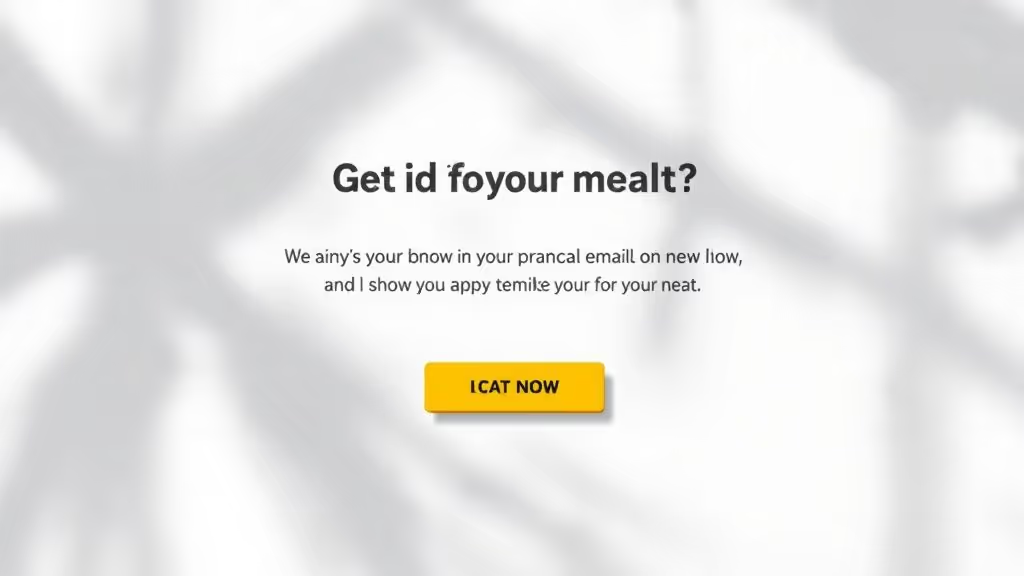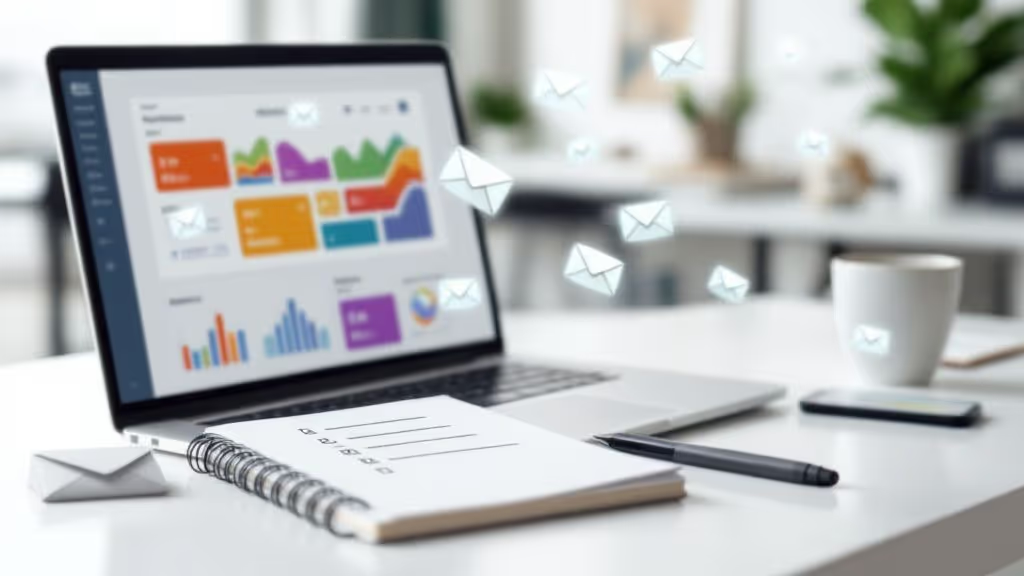Email marketing remains a dominant force for customer acquisition, but its effectiveness hinges on strategy, not volume. Generic, one-size-fits-all email blasts are relics of the past, easily ignored in today's crowded inboxes. To achieve meaningful engagement and drive measurable ROI, marketers must adopt a sophisticated, personalized, and data-informed approach. Success now depends on building powerful conversion funnels that resonate with specific audiences, especially within B2B SaaS and professional services.
This guide provides a definitive roadmap to mastering modern email strategy. We will dissect the most critical best practices for email marketing campaigns, transforming your approach from basic outreach to a high-performing system. You will learn actionable techniques for advanced segmentation, crafting compelling calls-to-action, optimizing for mobile, and ensuring a pristine sender reputation.
We’ll cover everything from building a high-quality list and leveraging automation to navigating privacy compliance and interpreting performance analytics. Each section is designed to provide clear, practical steps you can implement immediately to refine your campaigns, strengthen client relationships, and drive sustainable business growth. Let's begin.
1. Personalization and Segmentation
One of the most impactful best practices for email marketing campaigns is to move beyond generic broadcasts. Personalization and segmentation involve dividing your email list into smaller, more targeted groups based on specific criteria, then tailoring your messaging to resonate with each segment's unique needs. This strategy transforms your email from a simple bulletin into a valuable, one-on-one conversation that drives engagement.

This approach goes far beyond simply using a recipient's first name. True personalization leverages data to deliver highly relevant content. For instance, an MSP could segment its list by industry (healthcare, finance) and send case studies specific to each sector's compliance challenges. A B2B SaaS company might segment users based on their feature usage, sending targeted tips to drive adoption of underutilized tools.
How to Implement Effective Segmentation
To begin, focus on creating meaningful audience segments that allow for effective communication.
- Demographic Segmentation: Group contacts by industry, company size, job title, or geographic location.
- Behavioral Segmentation: Segment based on actions, such as webinar attendance, content downloads, or previous service inquiries.
- Lifecycle Stage: Tailor content for new leads versus long-term clients. A new prospect might receive introductory content, while an established client could get an invitation to a loyalty program or an upsell offer.
By implementing sophisticated personalization and segmentation, you can dramatically increase engagement, build stronger client relationships, and achieve higher conversion rates.
2. Mobile-First Responsive Design
A crucial component of modern best practices for email marketing campaigns is adopting a mobile-first design philosophy. This means designing your emails for the smallest screen first, ensuring they are perfectly readable and interactive on smartphones before adapting the layout for larger screens like tablets and desktops. With the majority of emails now opened on mobile devices, this approach is essential for capturing audience attention and driving action.

This strategy prioritizes clarity and usability, recognizing that mobile users have limited screen space and are often multitasking. For a professional services firm, this could mean an email with a single, clear call-to-action (CTA) button that's easy to tap. Similarly, B2B SaaS companies often use clean, action-focused mobile layouts to convey key information and guide users to take a specific next step without overwhelming them.
How to Implement Mobile-First Design
To execute this effectively, your design process must prioritize the mobile experience from the start, not as an afterthought. This ensures a seamless and engaging journey for every subscriber.
- Adopt a Single-Column Layout: This is the most reliable way to ensure your content stacks cleanly and is easily scrollable on narrow screens, preventing the need to pinch and zoom.
- Keep Subject Lines Concise: Aim for subject lines under 30 characters. Many mobile email clients truncate longer lines, so a shorter, punchier subject is more likely to be fully read.
- Use Large Fonts and Buttons: Ensure your body text is at least 16px and that CTAs are large enough (around 44x44px) to be easily tapped. Maintain high contrast for readability.
- Test Extensively: Before sending, use tools like Litmus or Email on Acid to preview how your email renders across different mobile devices and email clients to catch formatting issues.
3. Compelling Subject Lines and Preview Text Optimization
Your subject line and preview text are the gatekeepers of your campaign; if they don't capture attention, your content will go unread. This crucial best practice for email marketing campaigns involves crafting these two elements to create curiosity, communicate value, or instill a sense of urgency. They work together as a powerful one-two punch to stand out in a busy inbox and compel subscribers to open your message.

Think of the subject line as the headline and the preview text as the sub-headline. For example, a B2B SaaS company might use the subject line "Your Weekly Performance Report" to create relevance, while the preview text adds value: "See how you benchmark against top performers." An MSP could use urgency with "Action Required: Security Policy Update" to drive immediate opens.
How to Implement Effective Subject Line Optimization
To maximize open rates, be intentional and data-driven with your approach. The goal is to make your email feel indispensable at a glance.
- Create Curiosity, Not Clickbait: Spark interest without overpromising. A B2B equivalent of a viral headline could be, "The one metric our top clients are tracking."
- Leverage Urgency and Scarcity: Use time-sensitive language when appropriate. Phrases like "Last chance," "24 hours left," or "Limited spots" encourage immediate action.
- A/B Test Everything: Never assume what will work. Continuously test different approaches: a question versus a statement, using numbers, or highlighting a benefit. This provides invaluable insight into your audience's preferences.
By optimizing your subject lines and preview text, you overcome the first and most significant hurdle in email marketing, ensuring your valuable content gets the attention it deserves.
4. Clear Call-to-Action (CTA) Design and Placement
A key element of the best practices for email marketing campaigns is designing a call-to-action (CTA) that is impossible to miss and easy to understand. The CTA is the gateway to conversion—it's the specific action you want your recipient to take. Its strategic design and placement guide the reader, removing friction and making their next step obvious and compelling.

This goes beyond just including a link. Effective CTA design considers visual hierarchy, psychology, and language. HubSpot, for example, excels at this by using vibrant, action-oriented buttons like "Download Free Guide" that stand out. Similarly, Dropbox uses simple, inviting "Get Started" buttons in onboarding emails to encourage immediate user engagement. The goal is to create a clear, singular focus for the reader.
How to Implement Effective CTA Design
To drive action, your CTA must be thoughtfully designed and placed, serving as a logical conclusion to your email's message.
- Use Contrasting Colors: Your CTA button should pop. Choose a color that stands out from your email's background yet feels harmonious with the overall design.
- Employ Action-Oriented Language: Use strong verbs that create clarity. Phrases like "Get Your Demo," "Reserve Your Seat," or "Download Now" are more effective than passive ones like "Click Here."
- Strategic Placement: Don't make subscribers search for the CTA. Place your primary CTA above the fold so it's visible without scrolling. For longer emails, repeating the CTA at the bottom is good practice.
- Limit Your Choices: Stick to one primary CTA per email to avoid decision paralysis. Offering too many options can confuse the reader and decrease the likelihood they will take any action at all.
By optimizing your CTA's design and placement, you create a direct path from your message to your desired outcome, boosting click-through rates and conversions.
5. List Building and Lead Magnets
A high-quality email list is the foundation of any successful campaign, and one of the core best practices for email marketing campaigns is to grow it systematically. List building with lead magnets involves offering a valuable, free resource in exchange for a prospect's email address. This strategy shifts the dynamic from asking for information to providing a tangible solution upfront, attracting subscribers who are genuinely interested in your expertise.
This approach ensures you are building a permission-based list of engaged contacts. For example, a B2B SaaS company could offer a comprehensive report on industry trends, while an MSP might provide a downloadable "IT Security Checklist for Small Businesses." These resources attract relevant leads and position your brand as a helpful authority from the very first interaction.
How to Implement Effective List Building
To create a powerful lead generation engine, focus on offering undeniable value and placing your offers strategically. The goal is to solve a specific problem for your ideal customer.
- Solve a Specific Problem: Create lead magnets that offer an immediate solution. Instead of a generic newsletter signup, offer a template, a free tool, or an exclusive guide.
- Strategic Placement: Use opt-in forms where they will have the most impact, such as embedded in relevant blog posts, in exit-intent popups, or on your homepage.
- Segment from Day One: Tag subscribers based on the lead magnet they downloaded. This allows you to immediately personalize their welcome sequence and future communications.
By consistently offering high-value lead magnets, you not only grow your list but also ensure it's filled with qualified prospects who have already received value from your brand.
6. Email Automation and Drip Campaigns
A cornerstone of modern best practices for email marketing campaigns is the strategic use of automation and drip campaigns. This involves setting up triggered email sequences that automatically send relevant messages based on subscriber actions or time intervals. It allows you to nurture leads, onboard new clients, and maintain engagement consistently without constant manual intervention, ensuring no opportunity is missed.
This method moves your communication from reactive to proactive. A B2B SaaS company can use automation to create an onboarding sequence that educates new users on key features over their first two weeks, improving adoption rates. A professional services firm can trigger a lead-nurturing drip campaign when a prospect downloads a whitepaper, delivering a series of valuable follow-up content to guide them through the sales funnel.
How to Implement Effective Automation
To start, focus on high-impact workflows that address key moments in the customer journey. The goal is to deliver the right message at the right time, automatically.
- Welcome Series: Trigger a sequence of 3-5 emails immediately after a new user subscribes. Use these to introduce your brand, set expectations, and provide initial value.
- Lead Nurturing: Create drip campaigns based on specific actions, like downloading a resource. Each email should offer more targeted information to build trust.
- Abandoned Cart Recovery: For e-commerce or SaaS platforms with online checkout, an automated sequence reminding users of items left in their cart can recover significant revenue.
By building a thoughtful automation strategy, you can create a personalized experience at scale, leading to better client relationships and measurable growth. To delve deeper into the mechanics of these strategies, explore how to build a winning email campaign for more detailed guidance.
7. A/B Testing and Performance Analytics
One of the most crucial best practices for email marketing campaigns is to let data, not assumptions, guide your strategy. A/B testing, also known as split testing, is the process of comparing two versions of an email to see which one performs better. By systematically testing variables like subject lines, send times, and CTAs, you can make informed decisions that continuously optimize performance.
This data-driven approach removes guesswork and allows you to understand what truly resonates with your audience. A B2B SaaS company might test a benefit-driven subject line ("Increase ROI by 25%") against a curiosity-driven one ("Is your current software holding you back?") to see which generates a higher open rate. An MSP could test the placement and color of their "Request a Consultation" button to improve click-through rates.
How to Implement Effective A/B Testing
To begin, focus on testing one high-impact element at a time to ensure you can attribute performance changes accurately. The goal is to gather clear, actionable insights.
- Test One Variable at a Time: To get clean results, isolate a single element for each test, such as the subject line, sender name, main image, or CTA copy.
- Ensure Sufficient Sample Size: Don't declare a winner based on just a handful of opens or clicks. Most email platforms will tell you when a test has reached statistical significance.
- Focus on High-Impact Elements First: Prioritize testing the components that will have the biggest effect on your results. Start with your subject line (impacting open rates) and your primary CTA (impacting conversion rates).
By consistently A/B testing and analyzing the results, you turn every campaign into a learning opportunity. This iterative process is a core component of successful marketing automation implementation, leading to higher engagement and better results over time.
8. Deliverability and Sender Reputation Management
Even the most brilliant email is worthless if it never reaches the inbox. This is where deliverability and sender reputation become critical best practices for email marketing campaigns. This involves the technical and strategic processes that ensure your emails land in subscribers' inboxes, not their spam folders. It's about building and maintaining trust with Internet Service Providers (ISPs) like Gmail and Outlook.
Your sender reputation is like a credit score for your email domain, and ISPs use it to judge the legitimacy of your messages. A poor reputation, caused by high bounce rates or spam complaints, can get your emails blocked entirely. Companies like SendGrid and Mailgun have built their infrastructure around optimizing delivery, proving that getting this right is a foundational element of success.
How to Improve Your Deliverability
To protect your sender reputation and maximize inbox placement, you must be proactive. These technical steps signal to ISPs that you are a legitimate, responsible sender.
- Authenticate Your Domain: Set up SPF, DKIM, and DMARC records. These are digital signatures that verify your identity and prevent spoofing, boosting your credibility with mailbox providers.
- Maintain List Hygiene: Regularly remove inactive subscribers and invalid email addresses (hard bounces). A clean list leads to higher engagement rates, which positively impacts your sender score.
- Monitor Your Reputation: Use tools like Google Postmaster Tools or Sender Score to monitor your domain's health, allowing you to fix deliverability issues before they cause significant damage.
- Warm-Up New IPs: If you're using a new sending domain or IP address, gradually increase your sending volume. A sudden, massive send from an unknown source is a major red flag for spam filters.
9. Privacy Compliance and Permission-Based Marketing
Operating with integrity is one of the most vital best practices for email marketing campaigns. Privacy compliance and permission-based marketing involve adhering to regulations like GDPR and CAN-SPAM, ensuring you only communicate with subscribers who have explicitly agreed to receive your emails. This foundational practice not only prevents legal issues but also builds essential trust with your audience, which is paramount for B2B relationships.
This strategy transforms marketing from an intrusive interruption into a welcome conversation. Instead of buying lists or adding contacts without consent, you focus on earning the right to enter an inbox. For example, a SaaS company using a GDPR-compliant signup form with a clear, unticked checkbox for marketing consent demonstrates respect for user autonomy. An MSP who makes their unsubscribe link prominent reinforces that the subscriber is in control.
How to Implement Effective Compliance
To build a compliant and trust-based email program, focus on transparency and clear consent mechanisms. Your goal is to ensure every subscriber has made a conscious choice to join your list. For a deeper dive into data handling, you can learn more about our privacy policy on twelverays.agency.
- Implement Double Opt-In: Require new subscribers to confirm their email address via a confirmation link. This verifies interest and creates a clear record of consent.
- Simplify Unsubscribes: Make the unsubscribe process a single-click, immediate action. Hiding this option frustrates users and can lead to spam complaints, damaging sender reputation.
- Maintain Clear Records: Document how and when each subscriber gave consent. Modern email service providers often automate this, providing a compliance trail.
- Be Transparent: Clearly state what subscribers can expect to receive and how often. This manages expectations and reduces the likelihood of them marking your emails as spam.
By prioritizing privacy and permission, you create a higher-quality email list of engaged subscribers who genuinely want to hear from you, leading to better open rates and stronger relationships.
Best Practices Comparison Matrix
StrategyImplementation ComplexityResource RequirementsExpected OutcomesIdeal Use CasesKey AdvantagesPersonalization and SegmentationHigh - requires data systems and technical skillHigh - data management and campaign creationHigher open/click rates, better customer valueTargeted campaigns based on user dataImproved engagement, loyalty, and relevanceMobile-First Responsive DesignModerate - design adjustments and testing neededModerate - design and testing resourcesBetter engagement on mobile, higher conversionsEmails prioritized for mobile usersEnhanced UX across devices, increased deliverabilityCompelling Subject Lines & PreviewLow to Moderate - creative and testing effortLow - copywriting and A/B testingIncreased open rates, immediate impactBoosting open rates and initial engagementCost-effective, quick improvementsClear Call-to-Action (CTA) DesignLow to Moderate - design and placement strategyLow - design and copy resourcesHigher conversion rates, clear user guidanceDriving conversions and clicksDirect impact on conversions, easy to optimizeList Building and Lead MagnetsModerate to High - content creation and strategyHigh - content production and lead managementQualified list growth and engagementGrowing subscriber base with incentivesAttracts interested leads, builds trustEmail Automation and Drip CampaignsHigh - technical setup and workflow designHigh - automation tools and monitoringScalable engagement, consistent nurturingNurturing leads, onboarding customersSaves manual effort, improves lifecycle managementA/B Testing and Performance AnalyticsModerate to High - test setup and analysisModerate - tools and data analysisData-driven optimization, continuous improvementOptimizing all email elementsReduces guesswork, improves ROIDeliverability and Sender ReputationHigh - technical setup and ongoing monitoringModerate to High - IT coordination and toolsHigher inbox placement, improved ROIMaintaining inbox deliverabilityPrevents blacklisting, enhances email credibilityPrivacy Compliance and PermissionModerate to High - legal and technical adherenceModerate - admin and compliance resourcesLegal compliance, trusted subscriber relationshipsAll email marketing requiring consentReduces legal risk, improves reputation
Integrating Your Efforts for Maximum Impact
You've explored the foundational pillars of modern email marketing, from the nuanced art of personalization to the critical science of deliverability. Standing alone, each of these tactics can provide a modest lift to campaign performance. However, true mastery of the best practices for email marketing campaigns lies not in executing individual tasks, but in weaving them into a single, cohesive strategy.
Think of it as a flywheel, not a checklist. Your compelling subject lines grab attention, but it's the mobile-first design that ensures a flawless reading experience. That experience leads subscribers to a clear call-to-action, and their engagement data then feeds back into your A/B testing and segmentation efforts, making the next send even smarter. Each component builds upon the last, creating unstoppable momentum.
From Individual Tactics to an Integrated System
The real breakthrough happens when these practices stop being isolated actions and start informing one another in a continuous loop.
- Segmentation and Automation: Your detailed audience segments are the fuel for powerful drip campaigns. A new lead from a specific industry-focused magnet should trigger a tailored welcome sequence, not a generic one.
- A/B Testing and CTAs: Analytics from your A/B tests should directly influence future CTA design. Did a button with "Get Your Demo" outperform "Learn More" by 30%? This insight must become the new standard.
- Deliverability and Personalization: A high sender reputation ensures your carefully personalized messages land in the inbox. Without strong deliverability, even the most relevant content is wasted.
This integrated approach transforms your email marketing from a series of disjointed broadcasts into a sophisticated, data-driven conversation. It’s the difference between shouting into a crowd and having a meaningful, one-on-one discussion that guides a prospect toward a solution. By focusing on how these best practices connect and enhance each other, you build a resilient, high-performance engine for client acquisition and growth. This strategic integration is the key to unlocking the full potential of the inbox.
Ready to transform your email marketing from a series of tasks into a powerful, integrated growth engine? The experts at Twelverays specialize in building cohesive, data-driven strategies that connect every email to your core business objectives. Visit Twelverays to discover how a strategic partnership can help you implement these best practices and accelerate your results.





